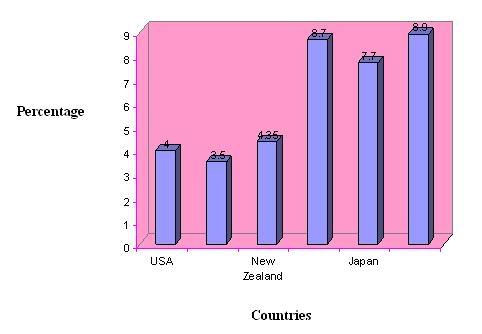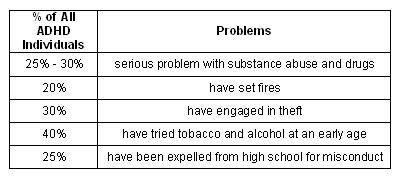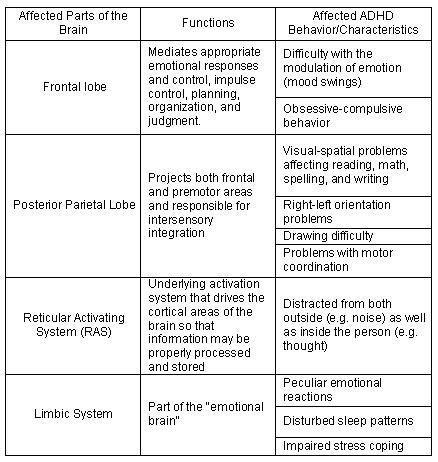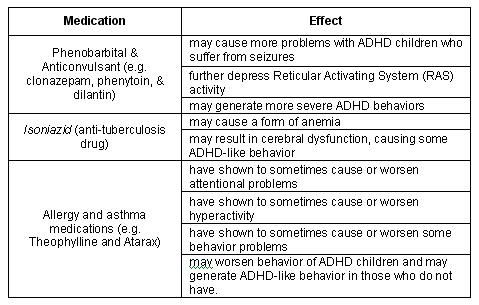Is ADHD Treatable? Since the exact cause of ADHD is still unclear to human knowledge, there is still no accurate or stand-alone medication to cure the disability. However, there are various treatments considered for the symptoms of ADHD in an individual. Every child has his/her own special need so there is no single treatment for all ADHD children. The child’s need and personal history should be considered in addressing his/her disability.
Medication Various medications have been used for decades in treating the symptoms of ADHD. The most commonly used and effective medications are known as stimulants. On the next page is a chart presenting some of the stimulants, their generic name, the “Approved Age” of children to use that drug, their common side effects, their duration of behavioral effects, and their pros and precautions.
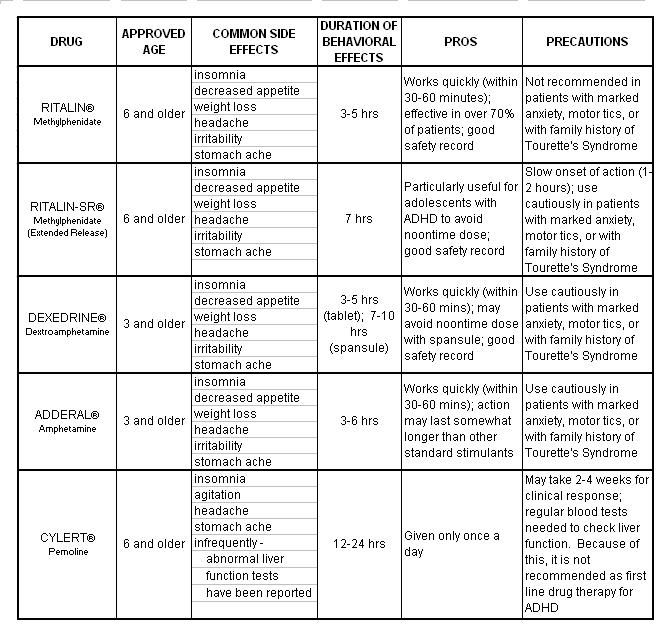
According to the National Institute of Mental Health (NIMH), a small number of children cannot tolerate any stimulant, no matter how low the dosage. Antidepressants are usually medicated to children in this case. This group of drugs includes Tofranil®, Nopramin®, Pamelot®, Wellbutrin®. There is also a group called Antihypertensives, which includes Catepres® and Tenex®. On the next page is another chart that presents some of the Antidepressants and Antihypertensives.
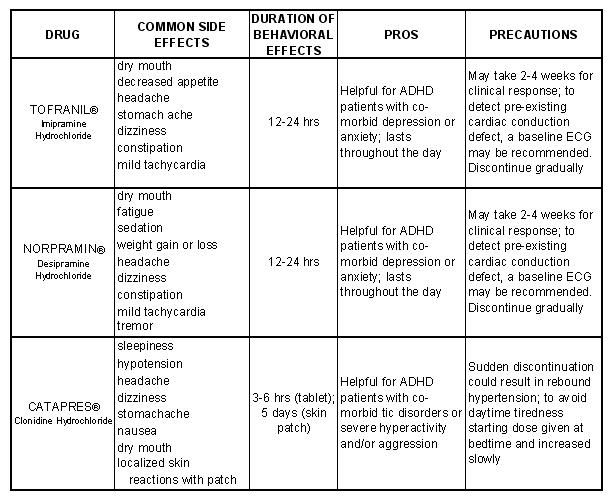
According to Dr. Flick, there is no evidence that continued use of medications is harmful, especially if they are monitored. These medications help many children go on with their lives normally and become more successful in school, at home, and in play. And studies have shown that 80% of children who use medication for ADHD still need it as teenagers, 50% need it as adults.
The National Institute of Mental Health (NIMH) conducted a rigorous study known as the Multimodal Treatment Study of Children with Attention Deficit Hyperactivity Disorder (MTA) to evaluate different treatment approaches for ADHD. There are four treatment programs evaluated, namely:
(1) medication management alone
(2) behavioral treatment alone
(3) a combination of both
(4) routine community care
The results of this study showed that long-term combination treatments (# 3) and the medication-management alone (# 1) have more significant positive effects on ADHD children than the behavioral treatment alone and the routine community care.
Behavioral Modification This form of treatment is important in managing the patterns of behavior of a child with ADHD. As said earlier, this can be applied, either alone or much better if with the combination of medication.
Skill Development Skill development is not necessarily for entertainment or leisure of a child. It is carried out to shape, enhance, or establish certain skills that are often deficient in children with ADHD. These trainings are applied at home, at school, and in the clinic so as to give children more learning trials in different settings and situations.
1. Attention Training
Dr. Flick developed Attend-O™ Attention Training Games that represents a hierarchically arranged set of increasingly more complex tasks that involve attentional processes as complex as those encountered in real-life situations. On the next page is an example of the attentional games.

2. Behavioral Inhibition Training
In 1999, Dr. Flick developed the Behavioral Inhibition Training as extension of the Attention Training Games. Its exercises include clicking the mouse when the non-target (BLACK) was seen or heard instead of the target (RED).
Aside from Dr. Flick’s BIT, there are two computerized programs that work on the rehabilitation of an ADHD individual’s behavior. One of these is developed by Sanford and Browne in 1988, called Captain’s Log™ . Nicknamed as “mental gym”, it provides a series of cognitive training exercises in several critical areas, including modules for attention, visual-motor skills, conceptual skills, numeric concepts/memory skills, and a newly added attentional program involving visual scanning, concentration, and inhibition. The other is called NeurXercise™ developed by Dr. Marvin Podd in 1989. Some of its training and exercises may be extended at home or at school’s computers.
3. Social-Skill Training
In this training, therapists discuss and models appropriate behaviors important in developing and maintaining social relationships. ADHD students are trained to master the following skills:
a. listening and responding
b. showing interest by smiling and asking questions
c. greeting others
d. giving compliments
e. understanding body language and vocal tones
f. understanding personal space and appropriate touching
g. learning to join an ongoing activity
h. sharing and cooperating
i. ignoring teasing
j. managing anger appropriately
k. waiting for a turn
4. Organizational/Study Skills
Areas developed in the organizational/study skills concentrate on the skills needed by and ADHD student in succeeding in class or improving his/her academic performance. These include the following:
a. learning strategies
b. organization
c. reading comprehension
d. communication
e. note taking
f. homework
g. stress management
h. memorization
i. time/materials management
j. proofreading
k. test taking
5. Anger Control
There are a number of anger management trainings for children and teens with uncontrollable temper. The techniques used in these trainings include modeling, role-play, teamwork, personal assignments, self- and peer-evaluation, constant involvement in activities to promote understanding and change in inappropriate and unproductive thoughts and behaviors. The common questions asked to understand unseemly behaviors are
(1) what happened (e.g. somebody teased me)
(2) what did you do (e.g. fought the teaser, ran away, cried, etc.)
(3) what were the consequences (e.g. black eye, guidance counselor, etc.)
Understanding the cues that signal anger arousal and the triggers that provoke anger would greatly help the individual in setting techniques and reminders in reducing anger and would give opportunity in evaluating self to correct the undesirable behavior.
6. Stress-Management Training
Relaxation and stress-management training exercises, in general, have been proven helpful for anxiety, depression, anger control, sleep difficulties, and general health and well-being of an individual. There are several relaxation and stress-management trainings or exercises available in print materials that can be bought on bookstores or even on the net. These tips and activities apply not only for normal individuals but even to those with special needs.
7. Self-Esteem Training
One of the additional characteristics present in an individual with ADHD is having poor self-concept and self-esteem. It would be best if children and teens with ADHD undergo trainings in increasing one’s self-esteem. An interactive computer program developed by Nancy Chaconas and the Multi-Health Systems staffs, entitled HELP-Self-Regard™, teaches adolescents to identify and challenge self-defeating thoughts, to take action and accept responsibility, to develop effective use of words, to create personal affirmations, to develop mental visualization skills, to set goals, and to use relaxation techniques. This greatly helps adolescents with their self-image.
Exercise It was noted that endorphin levels are lower in the brain of ADHD individuals and stimulants and exercises proves to increase its level, thus, making the ADHD individual more calm, logical, and communicative. Aside from the fact that exercise improves cardiovascular functions and weight management of a person, it can also be beneficial in reducing hyper-activity, stress, and restless behavior and in increasing attention and concentration in children and teens with ADHD.
Coaching ADHD Teens Just like in a basketball team, the “coach” in this program is the one who acts as a mentor, a cheerleader (or the number one fan that gives encouragement), a conflict mediator, and a person to turn to during crises. This program may give an ADHD teen unique experience as the mutual respect for the student-coach relationship develops. This course attempts to teach ADHD teens to learn independently, develop plans, and to set and achieve goals in high school and beyond.
For the Family and the ADHD Child Adjustments are not only necessary for the child with ADHD but also for the family members he/she belongs to. Any skills and modifications taught to an ADHD child in school and in clinics will prove useless if there is no continuity at home. The home plays a vital role in coping and improving the behavioral patterns of a child.
Support Groups Support groups usually give lectures on ADHD and most importantly provide venue for parents to share frustrations and success, obtain referrals to qualified specialists, and connect to other parents who have similar problems. These groups give them a feeling that they are not alone.
Parenting Skill Training Parents are taught by therapists and specialists on the proper training for the management and modification of their child’s behavior. The techniques are as follows:
1. Token or Point Systems
Parents immediately reward their child if he did something good or showed a positive behavior. In this system, parents should clearly tell the child what are the positive behaviors that they expect from him and the little rewards he could get if he does good. This reward system encourages the child to be conscious of his actions and perform only the positive characteristics taught by his parents. Correspondingly, mild penalties should also be given if the child does otherwise to discourage him from doing it again.
2. Time-out or Isolation
Parents remove their child from an agitating situation and put him on a chair or in a bedroom alone and quietly to calm him down. This is the penalty system. The parent can also remove a token if the child demonstrates another unruly behavior.
3. Quality Time
Parents should spend time with their child each day in which they share a pleasurable or relaxing activity. This bonding moment gives the parents a chance to take note of the strengths and the weak points of their child, to praise him for his abilities, and to help him improve his weaknesses.
